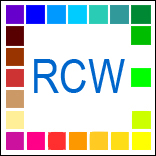| Welcome, Guest. Please Login or Register |
 |
|
 Home Home   Help Help   Search Search   Login Login   Register Register   Broadcast Message to Admin(s) Broadcast Message to Admin(s)  |
| Painting on Location with Real Color Wheel › Water Color and Gouache Paintings › Water Color & Ceramic Supplies › Water Color Pigments on the RCW |
|
 « Home « Home  ‹ Board ‹ Board  Top of this page Top of this page  |
Painting on Location with Real Color Wheel » Powered by YaBB 2.5.2!
YaBB Forum Software © 2000-2024. All Rights Reserved.
 Pages: 1
Pages: 1

